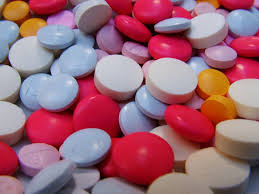Symptom Finder - Uremia
UREMIA
In developing a list of possible causes of uremia, the first thing to do is to divide them into three categories: prerenal causes, renal causes, and postrenal causes.
Prerenal causes: These include congestive heart failure (CHF), hypovolemic shock, starvation, trauma, gastrointestinal (GI) hemorrhage, severe dehydration, septic shock, and transfusion reaction.
Renal causes: It is best to further subdivide these using the mnemonic VINDICATE to vindicate yourself.
V—Vascular includes renal vein thrombosis, dissecting aneurysm, renal artery embolism, and thrombosis. Malignant hypertension would also fit into this category.
I—Inflammatory disorders include glomerulonephritis, pyelonephritis, and SBE.
N—Neoplasms include multiple myeloma and leukemia.
D—Degenerative disorders are not usually a cause of uremia.
I—Intoxication should bring to mind a host of toxins and drugs including aminoglycosides, sulfanilamides, cephalosporins, arsenic, mercury, and lead.
C—Congenital disorders should prompt the recall of polycystic kidneys and Henoch–Schönlein purpura.
A—Allergic and autoimmune will help one to recall the collagen diseases, serum sickness, Goodpasture syndrome, Wegener granulomatosis, and thrombotic thrombocytopenic purpura.
T—Trauma should help to recall crush syndrome, hemolytic transfusion reactions, burns, and massive hemorrhage as possible causes.
E—Endocrine disorders, other than diabetes mellitus, are not associated with a high blood urea nitrogen (BUN) level.
Postrenal causes: This category includes the causes of uremia that are most likely to be treatable. They are bladder neck obstruction from prostatic hypertrophy, a median bar or interureteric bar, urethral stricture, stones, and neoplasms.
Approach to the Diagnosis
In most cases of prerenal azotemia, the clinical picture is very revealing. Signs of shock, CHF, or GI blood loss will be evident. In more subtle cases, the BUN/creatinine ratio is typically 20:1 or more in prerenal azotemia, whereas it is 10:1 or less in renal cases. The serum and urine osmolality will also be helpful. The next step is to rule out postrenal causes by ultrasonography of the bladder or bladder catheterization. If there is a large volume of urine in the bladder, an urologist needs to be consulted before further workup is done. If not, a nephrologist should be consulted
Other Useful Tests
1. Complete blood count (CBC) (anemia, infection)
2. Urinalysis (pyelonephritis, renal azotemia)
3. Urine culture and colony count (pyelonephritis)
4. Chemistry panel (hypercalcemia, other electrolyte imbalance)
5. Sedimentation rate (infection)
6. Blood cultures (SBE)
7. Arterial blood gas analysis (CHF, shock)
8. Blood volume (CHF, shock)
9. Cystoscopy (bladder neck obstruction)
10. Retrograde pyelogram (obstructive uropathy)
11. Antinuclear antibody (ANA) analysis (collagen disease)
12. Antistreptolysin O (ASO) titer (acute glomerulonephritis)
13. Computed tomography (CT) scan of abdomen (neoplasm, abscess,
polycystic kidney)
14. Renal biopsy (glomerulonephritis, interstitial nephritis)
In developing a list of possible causes of uremia, the first thing to do is to divide them into three categories: prerenal causes, renal causes, and postrenal causes.
Prerenal causes: These include congestive heart failure (CHF), hypovolemic shock, starvation, trauma, gastrointestinal (GI) hemorrhage, severe dehydration, septic shock, and transfusion reaction.
Renal causes: It is best to further subdivide these using the mnemonic VINDICATE to vindicate yourself.
V—Vascular includes renal vein thrombosis, dissecting aneurysm, renal artery embolism, and thrombosis. Malignant hypertension would also fit into this category.
I—Inflammatory disorders include glomerulonephritis, pyelonephritis, and SBE.
N—Neoplasms include multiple myeloma and leukemia.
D—Degenerative disorders are not usually a cause of uremia.
I—Intoxication should bring to mind a host of toxins and drugs including aminoglycosides, sulfanilamides, cephalosporins, arsenic, mercury, and lead.
C—Congenital disorders should prompt the recall of polycystic kidneys and Henoch–Schönlein purpura.
A—Allergic and autoimmune will help one to recall the collagen diseases, serum sickness, Goodpasture syndrome, Wegener granulomatosis, and thrombotic thrombocytopenic purpura.
T—Trauma should help to recall crush syndrome, hemolytic transfusion reactions, burns, and massive hemorrhage as possible causes.
E—Endocrine disorders, other than diabetes mellitus, are not associated with a high blood urea nitrogen (BUN) level.
Postrenal causes: This category includes the causes of uremia that are most likely to be treatable. They are bladder neck obstruction from prostatic hypertrophy, a median bar or interureteric bar, urethral stricture, stones, and neoplasms.
Approach to the Diagnosis
In most cases of prerenal azotemia, the clinical picture is very revealing. Signs of shock, CHF, or GI blood loss will be evident. In more subtle cases, the BUN/creatinine ratio is typically 20:1 or more in prerenal azotemia, whereas it is 10:1 or less in renal cases. The serum and urine osmolality will also be helpful. The next step is to rule out postrenal causes by ultrasonography of the bladder or bladder catheterization. If there is a large volume of urine in the bladder, an urologist needs to be consulted before further workup is done. If not, a nephrologist should be consulted
Other Useful Tests
1. Complete blood count (CBC) (anemia, infection)
2. Urinalysis (pyelonephritis, renal azotemia)
3. Urine culture and colony count (pyelonephritis)
4. Chemistry panel (hypercalcemia, other electrolyte imbalance)
5. Sedimentation rate (infection)
6. Blood cultures (SBE)
7. Arterial blood gas analysis (CHF, shock)
8. Blood volume (CHF, shock)
9. Cystoscopy (bladder neck obstruction)
10. Retrograde pyelogram (obstructive uropathy)
11. Antinuclear antibody (ANA) analysis (collagen disease)
12. Antistreptolysin O (ASO) titer (acute glomerulonephritis)
13. Computed tomography (CT) scan of abdomen (neoplasm, abscess,
polycystic kidney)
14. Renal biopsy (glomerulonephritis, interstitial nephritis)

